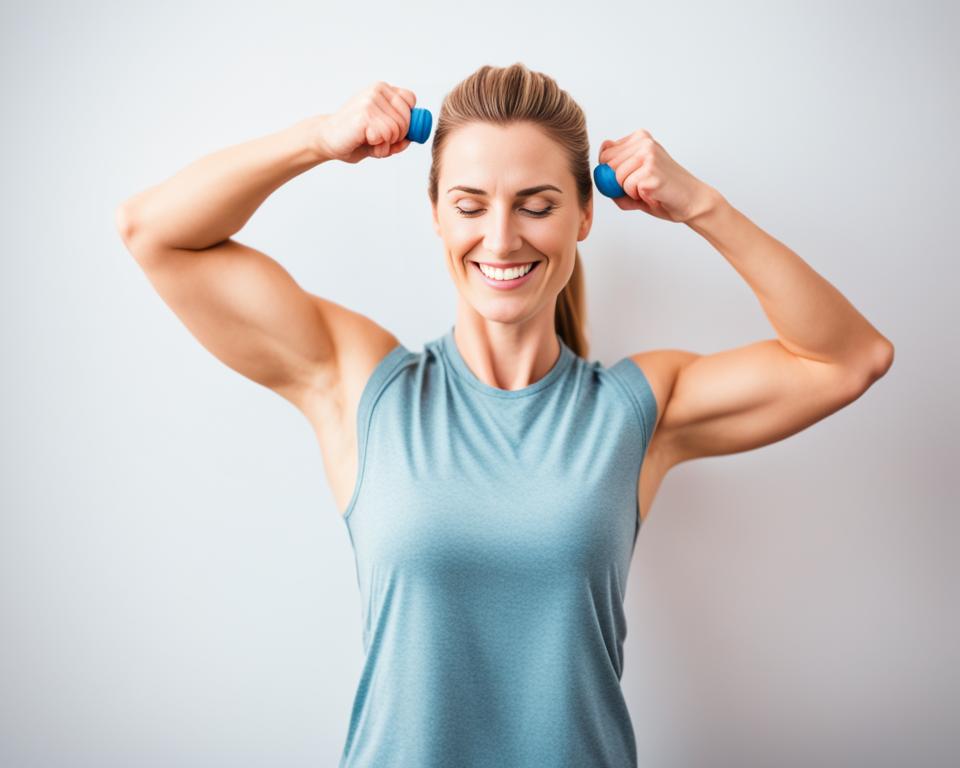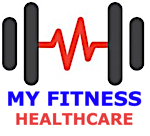Did you know veterans find peace through breathing after trauma? Just one week of deep breathing exercises can level out anxiety for over a year. I’m ready to show you how to leave muscle soreness behind with these same techniques. Whether you’re sore from a tough workout or pushing your body hard, I know how important it is to recover fast and safely. Here are my top tips to help fight soreness and get you back in the game.
As your Muscle Building Mentor, I want to share that beating soreness is more than finding quick relief. Think of soreness as your muscles crying out for a break and attention. But don’t worry, I have strategies to ease the pain and make your muscles stronger against future soreness.
So, “What’s the best way to start recovering?” you might wonder. I’m here to reveal not just fast solutions but also ways to keep soreness away for good. My advice is based on science, proven in the gym, and aimed at keeping you well. Let’s work on moving more freely and with less pain!
Key Takeaways
- Intensive breathing can dramatically reduce anxiety, aiding muscle recovery.
- Understand your muscles’ recovery needs to prevent future soreness.
- Combat soreness with evidence-backed strategies for quick and long-term relief.
- Discover proactive measures, including hydration and nutrition, for soreness prevention.
- Learn how moderate to vigorous activity can improve your mood and reduce pain.
- Explore simple changes and exercises to strengthen muscles and alleviate pain.
Understanding Muscle Soreness and Recovery
After intense exercise, people often feel muscle soreness. This marks the beginning of recovery. Soreness happens especially after exercises like running downhill. This is because muscles face more stress than with other movements.
The Science Behind Muscle Soreness
We need to use science to prevent soreness. Research and my own experience show that soreness peaks between 24 to 72 hours after working out. During this key period, knowing how to recover is crucial.
Why Your Muscles Need Time to Heal
There’s a lot of discussion on the best ways to ease sore muscles. Resting isn’t just for relief—it helps muscles grow and get stronger. The healing phase depends on the workout’s intensity and your body’s unique makeup. This shows why recovery plans should be customized.
The Role of Inflammation in Muscle Repair
Inflammation isn’t always bad—it helps with muscle repair by sending healing signals. But too much inflammation can slow down recovery. Managing inflammation well is key to preventing soreness. It helps athletes recover fully and come back stronger.
Preventing Muscle Soreness with Proactive Measures
As someone dedicated to physical health, I know how crucial it is to prevent muscle soreness. I’ll share strategies based on science and practical knowledge.
Importance of Proper Hydration and Nutrition
Hydration and nutrition do more than quench thirst and provide energy. They act as natural remedies for soreness. They improve workout results and speed up recovery. For instance, drinking 12 to 16 ounces of water every 15 minutes during exercise is key.
Staying hydrated helps your muscles, which are about 75% water. Eating foods high in antioxidants and protein after exercising also helps. This combo supports muscle recovery and lessens soreness.
Effective Warm-Up and Cool-Down Routines
Good warm-up and cool-down routines are essential to avoid soreness. Begin your workout with a dynamic warm-up. This activates your parasympathetic nervous system and enhances blood flow. It prepares your muscles and reduces soreness later on.
After exercising, an active cool-down helps circulation. This process removes metabolic byproducts that cause soreness. So, warming up and cooling down are key.
Incorporating Stretching and Dynamic Movements
Stretching and dynamic movements are excellent for relieving soreness. Opt for dynamic movements over static stretching to prepare your muscles. After your workout, try yoga or light resistance training. These activities increase blood flow to sore muscles without further damage.
Remember, the goal is not just to alleviate muscle soreness post-factum but to implement strategies that preempt and mitigate it. Think of these methods as an investment into your muscle recovery bank account, with lucrative wellness returns. Should you be looking for more personalized advice or assistance, don’t hesitate to reach out for guidance on muscle recovery tips personalized to your lifestyle and fitness level.
Finally, view these practices as part of your overall self-care routine. They’re not just tasks but powerful tools to reduce soreness and boost performance. With these tips, you’re on your way to faster recovery and a stronger body.
How to Get Rid of Soreness with Immediate Actions

If you’re looking for soreness relief and wondering how to get rid of soreness, immediate actions you take can make a significant difference. Start by drinking plenty of water. It helps reduce muscle soreness and kickstarts recovery. But how else can you manage discomfort after a tough session?
- Utilize tools like foam rollers or massage guns to work out knots and stimulate blood flow to your sore muscles.
- Apply gentle heat to soothe aches and facilitate muscle relaxation.
- Engage in light, restorative exercises such as walking or yoga to promote blood circulation without overexertion.
| Indicator | Guidance |
|---|---|
| DOMS Peak Pain | 48-72 hours post-workout |
| Persistent Soreness | Seek medical attention if worse after 72 hours |
| Exercise Intensity Entry | Start new routines gradually to reduce rhabdomyolysis risk |
| Mild Soreness Activity Level | Working out at mild soreness (1-3 on a pain scale) is often safe |
If your soreness relief stops improving after working out, it’s likely a sign you need rest. Keep in mind that some factors increase rhabdomyolysis risk. Always stay hydrated, especially when exercising in heat or on certain medications. The UVA Runner’s Clinic offers specialized care for endurance athletes. Lastly, always warm up and ease into intense workouts. This effectively reduces muscle soreness and injury risk.
Natural Remedies and Techniques for Soreness Relief
If you’re dealing with sore muscles, ancient and modern methods can help. These natural ways offer real help without using drugs. I have found these techniques through looking at old remedies and new science.
Tart Cherry Juice and Its Anti-Inflammatory Effects
Tart cherry juice, rich in antioxidants, fights muscle soreness and inflammation. Studies show it helps if you drink it after working out. Try it next time you exercise and see if you feel less sore.
The Therapeutic Power of Heat and Massage
Heat and massage soothe muscle aches well. Using heat therapy increases blood flow to tense muscles. Adding massage doubles the effort to alleviate soreness.
This combination also helps with muscle recovery. It encourages you to keep moving on your fitness path.
Using Foam Rolling to Alleviate Muscle Tension
Foam rolling is a popular choice for easing muscle pain. It’s a direct way to lessen muscle tension. Rolling over tight spots after a workout can improve blood flow and speed up recovery.
Remember, natural sore muscle remedies are helpful but not a replacement for a doctor’s care. Moderation is key. Think about how each method might fit into your schedule. I’ve compiled a table of these remedies to help you choose what might work for you.
| Remedy | Benefits | Usage Tips |
|---|---|---|
| Tart Cherry Juice | Decreases muscle pain and inflammation | Consume post-workout or daily for best results |
| Heat and Massage | Relaxes muscles, improves blood flow, reduces cytokines | Apply heat and/or seek massage therapy after exercise |
| Foam Rolling | Lessens muscle tenderness, promotes circulation | Use post-exercise and 24 hours later to maintain mobility |
These natural remedies show looking after your body can be simple. Methods like tart cherry juice, heat, massage, or foam rolling help us. They allow us to move freely while caring for our bodies naturally.
Conclusion
We’ve learned a lot about muscle recovery. There are many ways to help your body bounce back from soreness. Proper warm-ups and dynamic stretches are key to preventing soreness.
Even though stretching might help right away, it doesn’t do much for soreness that comes later. But, natural remedies like foam rolling and fish oil can really help. Drinking water and eating right also play a big part in reducing soreness.
Getting rid of soreness doesn’t have a single solution. It’s important to find what works for you. This might include active recovery, careful use of pain relief drugs, and sometimes using ice or heat. Don’t forget, good sleep and handling stress are just as important.
DOMS can be really tough in the days right after a workout. If you start feeling sore, try to keep moving but in a gentler way. It’s important to ease up on your workouts to help your body heal.
Always remember to take things slow, stay updated with the latest info, and listen to your body. It knows what’s best for you on your recovery journey.
FAQ
What causes muscle soreness after a workout?
Muscle soreness appears after workouts with many eccentric contractions, like running downhill or doing bicep curls. These actions put more stress on muscles, causing the soreness you feel later.
Why should I allow my muscles time to heal?
It’s vital to give your muscles time to heal for growth and recovery. In this time, muscles rebuild and strengthen. This not only boosts your performance but also helps prevent injuries.
Can inflammation be beneficial for muscle recovery?
Yes, some inflammation is natural for recovery, signaling healing and growth. Managing inflammation well ensures muscles repair and get stronger properly.
How does proper hydration and nutrition support muscle recovery?
Hydration is key since muscles are about 75% water, which is essential for their function. Eating antioxidants and proteins helps repair muscles and reduces soreness after working out hard.
What kind of stretching should I do before and after my workouts?
Before workouts, do dynamic stretches to prepare your muscles. Afterwards, light resistance or yoga boosts blood flow and helps with soreness without further damage.
What immediate actions can I take to reduce muscle soreness?
After exercising, drink plenty of water and use tools like foam rollers or massage guns. Apply heat to sore spots and do light exercises to help healing.
Are there any natural remedies for reducing soreness?
Tart cherry juice, with its anti-inflammatory properties, can help ease muscle pain. Heat therapy, gentle massage, and foam rolling are also good. They improve blood flow and help muscles recover.
How do heat and massage help sore muscles?
Heat and massage boost blood flow, aiding in the removal of waste products causing soreness. Massage also lowers inflammation and boosts muscle cell function.
Does foam rolling really work for alleviating muscle tension?
Yes, foam rolling reduces muscle soreness and improves movement by increasing blood flow and delivering nutrients to tissues. It is best used after workouts and again a day later.

